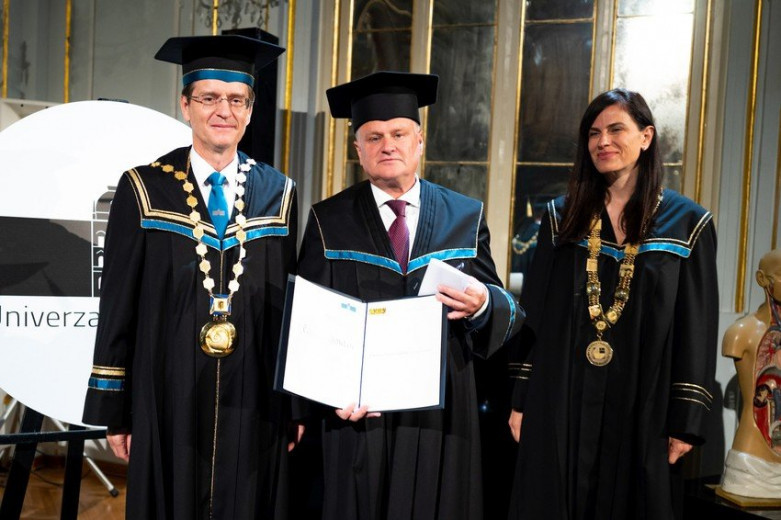Date: 23. January 2023
Time to read: 2 min
A civil engineer by profession, lecturer and entrepreneur, he is a world-renowned bridge designer whose designs have been used to build 200 such structures. His most high-profile project at the moment is the Pelješac Bridge, considered one of the greatest modern engineering achievements in Europe in recent years.
Pipenbaher graduated from the Maribor Faculty of Civil Engineering in 1981. After graduating, he joined the engineering office of the Gradis construction company. After less than ten years, he embarked on his entrepreneurial journey. He is also a lecturer at the Faculty of Civil Engineering, Transport Engineering and Architecture in Maribor.
He specialised in bridge design, some of the most notable being: Pelješac (Croatia, 2022), Nissibi across the Euphrates River (Turkey, 2015), Millennium in Podgorica (Montenegro, 2006), the largest railway viaduct in Israel (2017) and the Črni Kal viaduct (2004).
Since the beginning of this millennium, only five bridges longer than two kilometres have been built in Europe, including the 2,404-metre Pelješac bridge. The bridge connects mainland Croatia via the Pelješac peninsula to the Croatian territories around Dubrovnik. This bypasses the border crossing with neighbouring Bosnia and Herzegovina at Neum, where that country has access to the sea.
Each bridge has its own story
Offshore bridges are major engineering and construction achievements, as they are for example constructions over straits with large spans and oblique backstays, with challenging foundations, where winds are strong, and they can also be built in areas with high seismic loads. In 2004, the Črni Kal viaduct was built according to his designs and was considered a major achievement on a Slovenian and European scale at the time. Today, his Pelješac Bridge has crossed the borders of European dimensions, as it is a landmark on a global scale. It was built over the sea, which is a much more complex and demanding construction than bridges over rivers or valleys.
Pipenbaher's way of designing is characteristic in that he never designs bridges only from a technical point of view, but always considers the landscape in which the structure stands and the story it tells. In this way, he also builds character and soul into the bridges. As of the beginning of 2023, the Republic of Croatia has also joined the Schengen area. With this in mind, and with the bridge link to the Dubrovnik area in place, the route to this part of the Adriatic Sea has become smoother and shorter for Slovenians, too.
In lectures, whether at the faculty or at international congresses, he tries to pass on his knowledge to young people and inspire them to become engineers, as there are fewer and fewer such professionals. He motivates the students at the Faculty to study more deeply, because he is convinced that only with knowledge, and the necessary talent, will they be able to create plans that will be used to build important and large buildings.









